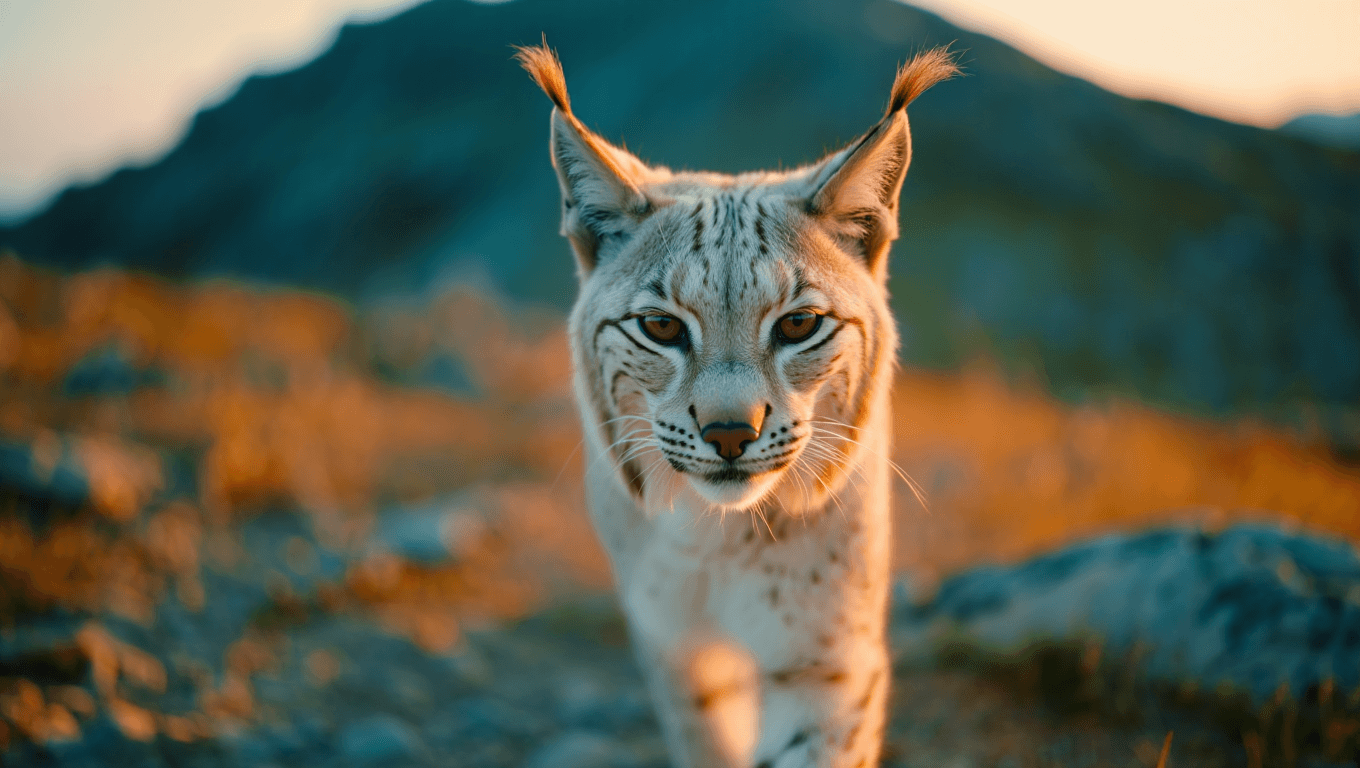Spain just made wildlife history on October 22nd, 2025. An amateur photographer named Ángel Hidalgo captured something nature lovers never thought possible. He filmed the world’s first leucistic Iberian lynx ever documented in the wild. This extraordinary discovery proves that wildlife conservation actually works.
Night Flight Plus Streams Cult Classics Cable Won’t Touch Anymore
Rotate Your Subscriptions Like This to Save $1,200 This Year
🔥 Quick Facts:
- Photographer Ángel Hidalgo discovered the white lynx in Jaén, Spain on October 22, 2025.
- Leucism causes partial pigment loss while preserving normal eye color and vision abilities.
- Spain’s Iberian lynx population rebounded from under 100 animals in 2002 to approximately 2,000 today.
- The IUCN reclassified the species from Endangered to Vulnerable in June 2024.
- The exact location remains secret to protect this one-of-a-kind animal from poachers.
What Happened: The Discovery of Nature’s Ghost Cat
Hidalgo works regularly with wildlife camera traps in Spain’s Jaén mountains. He’s spent years capturing animal footage in these rugged southern slopes. When reviewing his footage, he spotted something truly extraordinary on camera. The rare lynx displayed an unusual pale, cream-colored coat. Yet it retained sharp eyes and the trademark ear tufts.
Change This One Setting to Fix Blurry Streaming Quality
7 Streaming Services Americans Don’t Know Exist (But Should)
Experts immediately confirmed this animal has leucism, not albinism. Leucism causes a partial loss of pigmentation in an animal’s fur. Unlike albinism, leucism preserves normal eye color and function completely. The lynx appeared healthy and moved naturally through the forest.
“I’ve been setting up cameras for years with many failed attempts and long hours of work. But this time, nature gave me something truly unique.”
The sighting immediately went viral across social media platforms worldwide. Conservation groups celebrated this discovery as a landmark moment. The location remains deliberately secret to ensure the animal’s safety and survival.
Why This Matters: A Victory for Conservation Efforts
This discovery represents an absolute triumph for wildlife protection globally. The Iberian lynx teetered on the brink of complete extinction decades ago. In 2002, fewer than 100 lynxes survived in the wild. Poaching and habitat loss had nearly destroyed the entire species.
Spanish and Portuguese authorities launched intensive conservation programs. The European Union helped fund these critical Life Projects extensively. Teams captured wild lynxes for breeding and reintroduced offspring. They protected habitat corridors across the Iberian Peninsula.
The population grew from under 100 to over 2,000 in just 23 years. That’s an incredible comeback story for any endangered species. Conservationists call this one of Europe’s greatest wildlife restoration projects. The white lynx sighting proves the species’ health and genetic diversity.
However, experts note challenges remain for this rare leucistic individual. Its light coat offers poor camouflage in the forest setting. Natural predators can spot it more easily than normal lynxes. Still, the animal appears healthy and hunting successfully in the wild.
The Details: Leucism and What Makes This Lynx Special
Understanding leucism helps explain this creature’s extraordinary appearance completely. Leucism affects pigmentation but preserves eye function and color.
| Characteristic | Leucistic Animals | Albino Animals |
| Pigmentation | Partial loss (appears white/pale) | Complete loss (pure white) |
| Eye Color | Normal pigmentation preserved | Pink/red from exposed blood vessels |
| Vision | Normal hunting and navigation ability | Often severely impaired or absent |
| Rarity in Wild | Extremely rare (around 1 in 30,000) | Extremely rare in wild populations |
Leucism occurs in roughly 1 in 30,000 birds and mammals alive. Finding it in an endangered species like the Iberian lynx is extraordinarily unlikely. This genetic anomaly probably wouldn’t survive in captive-bred programs easily. The fact that it thrives in the wild amazes scientists completely.
The lynx’s appearance earned it nicknames like “the ghost of the forest.” Its pale coat contrasts dramatically with the dark Mediterranean forest landscape. It retains all the classic lynx features: ear tufts, cheek whiskers, and facial ruff.
What to Watch For: The Future of Spain’s White Lynx
- Wildlife authorities will monitor this leucistic individual through camera traps regularly.
- Researchers want to document its hunting success and reproductive behavior over time.
- The next goal involves tracking whether it finds a mate and breeds successfully.
- Scientists will study how its coat affects survival in predator-rich ecosystems.
- Conservation teams expect additional camera captures showing the lynx’s life and development.
The discovery has energized conservation efforts across Spain and Portugal. NGOs now seek additional funding for expanded habitat protection programs. Reintroduction projects may accelerate in the coming years ahead. Wildlife officials continue expanding safe corridors between lynx populations.
Could More White Lynxes Exist in Nature’s Hidden Corners?
This sighting raises fascinating questions about hidden genetic diversity. Could other leucistic lynxes live in remote mountainous areas? Jaén Province covers vast, sparsely populated territories with minimal human presence. Camera traps capture only a tiny fraction of the lynx population living wild.
Scientists estimate that thousands of lynxes now roam the Iberian landscape. Most documented individuals have normal spotted coats with typical coloring. Yet the discovery suggests genetic variety exists throughout the population. More unusual variations might eventually appear through future wild encounters.
What you’re witnessing is nature’s remarkable resilience and adaptation capacity. A species brought to the brink of extinction staged an incredible comeback. Now, that comeback even includes genetic diversity showing in unusual ways. Spain’s white lynx represents hope for endangered species worldwide.
Sources
- Euronews – Spanish photographer captures world’s first ever leucistic Iberian lynx on camera
- NDTV – World’s first white Iberian lynx spotted in Spain: Proof that conservation works
- Wildlife SOS – Leucism, albinism, and melanism in endangered species genetics and documentation
Similar posts:
- Plastics in Argentina: found in bird nests, marine food chains
- Jane Goodall Netflix Doc Famous Last Words Debuts Oct 2025 – Why It Matters To Conservation Fans
- Few realize a bear just stormed a U.S. grocery, wildlife officers urgently warn you must do next
- Derrick White Reveals Hilarious Way Gregg Popovich Announced His Celtics Trade!
- Paranthropus boisei: Did this hominid also use tools like humans?

Daniel Harris is a specialist journalist focused on the crossroads of breaking news, extraordinary history, and enduring legends. With a background in historical research and storytelling, he blends timely reporting with timeless narratives, making complex events and ancient myths resonate with today’s readers. Daniel’s work often uncovers surprising links between present-day headlines and legendary tales, offering unique perspectives that captivate diverse audiences. Beyond reporting, he is passionate about preserving oral traditions and exploring how extraordinary stories continue to shape culture and identity.

